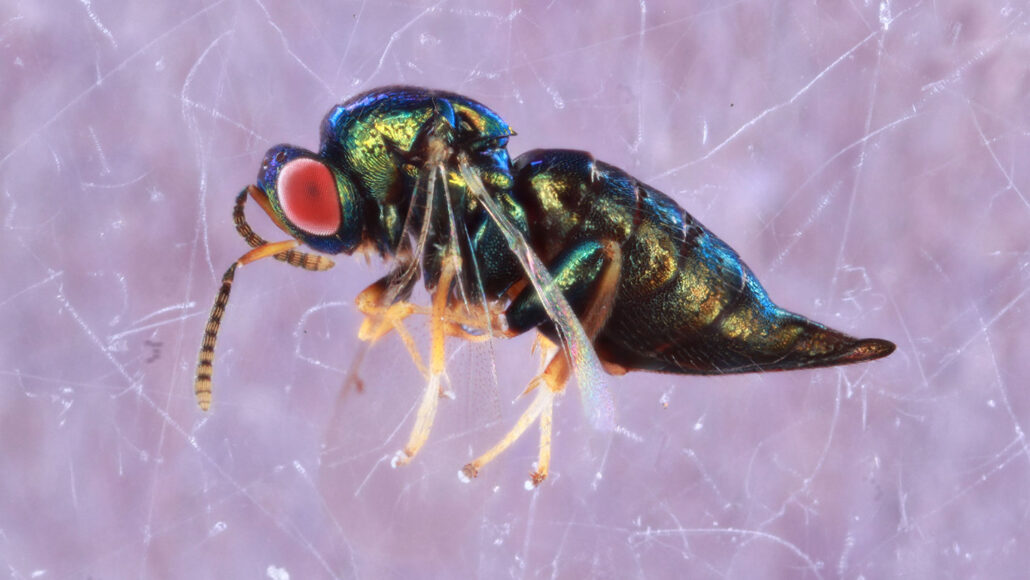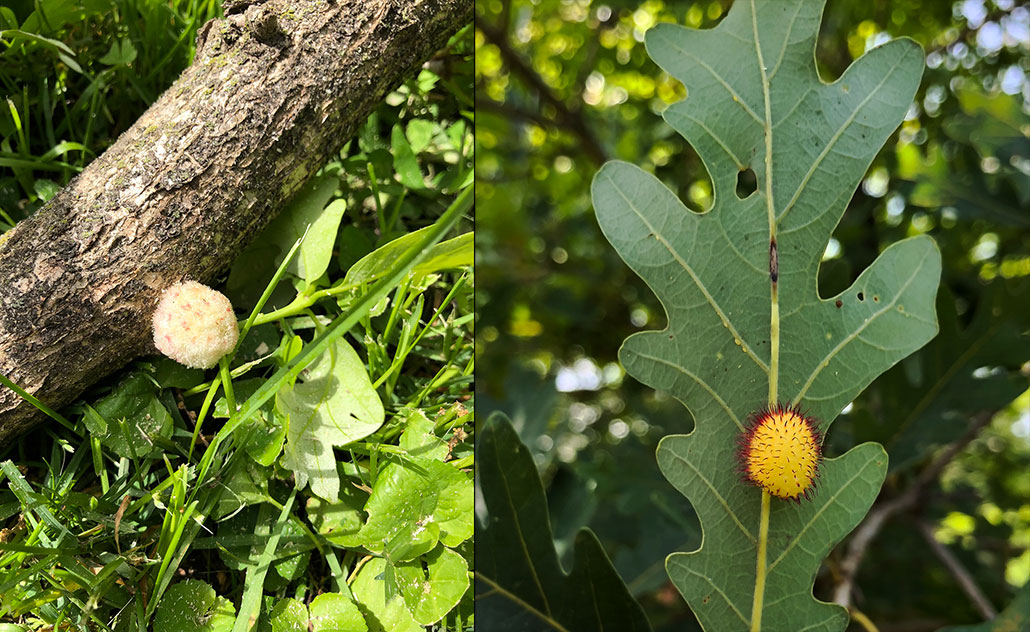Surprise! Sixteen tiny wasp species found masquerading as one
The new discovery hints at other hidden insect diversity waiting to be uncovered

Scientists recently discovered that one supposed species of parasitic wasp, Ormyrus labotus, is 16 or more genetically distinct species. At least from the outside, however, they all look the same.
Sofia Sheikh
You might think that discovering a new animal species requires traveling to a remote part of the globe. Perhaps you’d have to look high in the treetops of a rainforest. Or maybe deep in an ocean trench. Not so. One group of scientists recently discovered at least 16 new wasp species. Many had been hiding within view of the scientists’ windows at the University of Iowa.
For more than 160 years, scientists thought that all of North America’s Ormyrus labotus wasps were one species. Just a few millimeters (tenths of an inch) long, these critters do look pretty much the same. Only their behavior hinted at potential differences.
These wasps are parasitoids (PAIR-ih-sih-toyds). That means they are parasites that prey on other parasites. O. labotus wasps lay their eggs in abnormal growths — called galls — on oak trees. Other parasitic wasps created those galls to protect their own young. Once the predator’s eggs inside these galls hatch, those young will begin feeding on the prey species. More than 65 different oak species and parts of those trees can host galls that O. labotus parasitizes.
Many hundreds of different wasp species make galls. Some of the galls in which O. labotus puts its eggs are hard. Other galls are squishy. Some are fuzzy. Others not. The galls in which O. labotus finds prey may be on a branch, a stem or a leaf. Some invaded galls develop in spring. Others emerge only in summer.

“It was confusing and surprising to find one species that was so good at parasitizing so many different [gall-wasp] hosts,” says Sofia Sheikh. Such generalists are rare. Most parasitic wasps lay their eggs to dine on one very particular host. Sheikh and her colleagues wondered: “How can one parasite successfully attack dozens of hosts that are all so different?”
To find out, these researchers gathered galls from oak trees across the country. Some were right around their university campus in Iowa City. Carefully, they logged what type of gall it was, where it was found and when.
Back at the lab, the researchers collected the O. labotus wasps that emerged from these galls and looked at them under a microscope. This was similar to how naturalists in the 1840s first identified the wasps. But Sheikh’s team also had modern tools to inspect the insects’ genetic material. They used these tools to decode one particular gene in the wasps’ DNA. Then, they looked for differences in that gene from one insect to the next.
And they found distinctly different versions of the gene. The researchers used these data — combined with those on the type of gall from which the wasps emerged — to group O. labotus into some 16 to 18 different species.
“What’s really cool,” says Alex Smith, “is how this shows that Darwinian discovery could be happening in backyards and at schools all over North America.” Smith is a biologist in Ontario, Canada who did not take part in the new study. He works at the University of Guelph. By Darwinian discovery, he refers to the finding of many new species, just as naturalists in Charles Darwin’s era did during the 1800s. They regularly turned up new species of animals and plants.
The Iowa team shared its wasp discovery February 16 in Insect Systematics and Diversity.
Uncovering “cryptic” species
“We used multiple lines of evidence” to uncover the new species, says Sheikh. Researchers call this an integrative approach. It can help scientists quickly unveil so-called cryptic species — ones that may have been hidden because they looked identical to another.
This is important for a couple of reasons, Sheikh says. For instance, O. labotus wasps could be used to destroy other parasitic insects that damage oak trees. But to do that, scientists can’t bring in just any O. labotus wasps. They’ll need to find which specific ones attack and dine on the target pest.
Uncovering new parasitoid species also can help scientists understand how parasites evolve. It might even reveal how vulnerable these creatures are to extinction. Parasites with many types of prey tend to be resilient. If they lose one host, they can turn to another species. But what if parasites thought to be such generalists are, in fact, quite specialized — as the O. labotus wasps seem to be? These “specialist” parasites could be more likely to die out when they lose their particular host species.
Sorting out the species of O. labotus wasps is one step toward uncovering the full diversity of life on Earth, notes Smith, at the University of Guelph. “Studies like this one help us better understand the cast of characters whose planet we share.”
For now, Sheikh says, the 16 new wasp species haven’t been given new names. So awkward as it is, they’re all still being called O. labotus.







